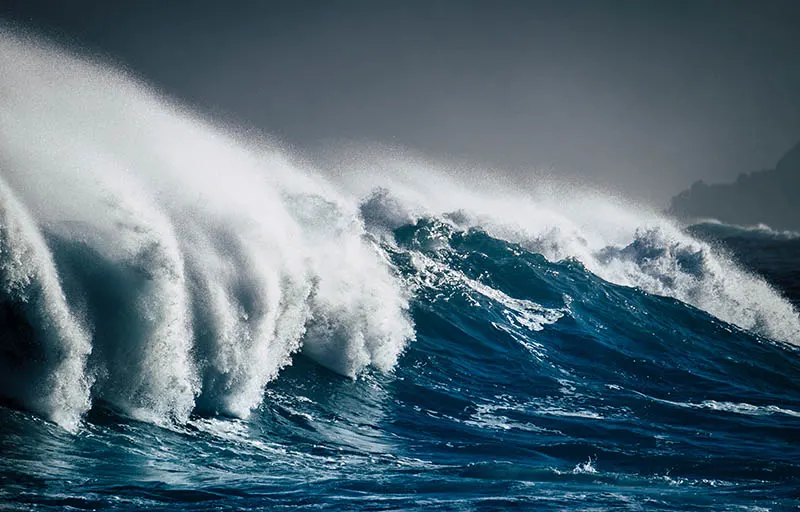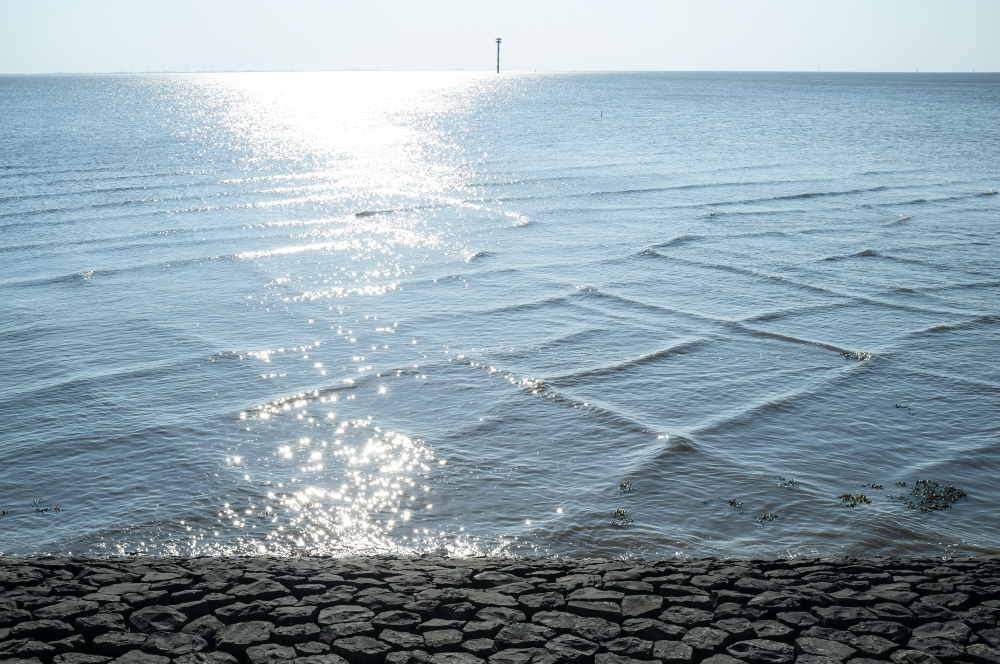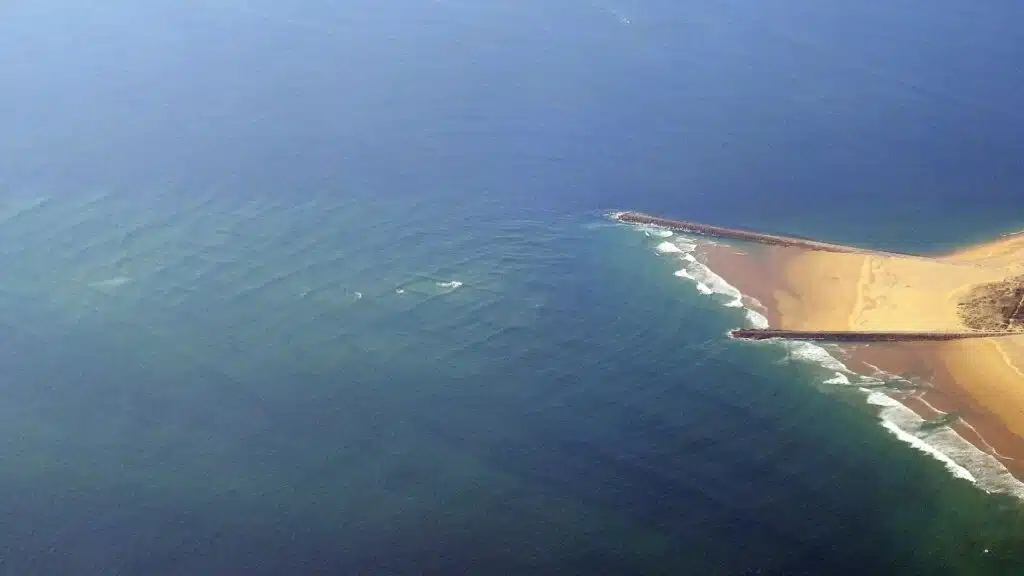Square waves or cross sea
Blog Sections
Discovering the Enigmatic Square Waves: The Fascinating Phenomenon of the Cross Sea
Step into the mesmerizing world of square waves, a natural oceanic pattern that captivates and mystifies with its grid-like structure, offering a blend of beauty and danger for those lucky enough to witness it.
The ocean holds countless secrets and marvels, from towering waves to shimmering sunsets, but few are as visually striking and intriguing as square waves, also known as a “cross sea.” This rare ocean phenomenon creates a grid-like pattern on the water’s surface, with waves intersecting at near-perfect right angles, forming a mesmerizing checkerboard appearance. While beautiful to behold, square waves also present a significant hazard to sailors and swimmers due to the unusual currents and forces involved.
This natural wonder occurs in select locations around the world, making it a sought-after sight for those who understand both its beauty and its risks. In this article, we will explore everything about square waves, from the science behind their formation to the best places to see them and the safety concerns they pose.
What Are Square Waves? Understanding the Science Behind the Cross Sea
Square waves, also referred to as a cross sea, are a rare and fascinating maritime phenomenon where the waves form a grid pattern on the ocean surface. This unusual sight occurs when two distinct wave systems coming from different directions meet and cross each other. Instead of combining into one set of waves, they maintain their own direction, creating a visual checkerboard effect.
The primary cause of square waves is an intersection of two ocean swells—groups of waves that have traveled across long distances from two different weather systems. These swells travel in different directions, often coming from different storms or high-pressure systems located far from the area where the cross sea is observed. When these swells meet, the waves collide, and the crossing pattern forms, resulting in the square or grid-like waves.
The formation of square waves is highly dependent on environmental conditions, and it usually occurs when there is a strong and stable breeze from two distinct directions. The result is a mesmerizing yet volatile sea that can be dangerous for boats and swimmers alike due to the unpredictable currents below the surface.

Where Can You See Square Waves? The Best Locations Around the World
While square waves are not a common occurrence, there are several locations around the world where they can be observed. These places are known for the specific conditions that allow two swell systems to converge, creating the cross sea phenomenon. Here are some of the best-known spots to see square waves:
Île de Ré, France: One of the most famous locations to witness square waves is at Île de Ré, a small island off the west coast of France in the Atlantic Ocean. The phenomenon occurs near the island’s beaches, where two distinct ocean swells from the Atlantic meet. This location is a popular destination for photographers and nature enthusiasts hoping to catch a glimpse of the mesmerizing cross sea.
Galicia, Spain: The rugged coastline of Galicia in northwest Spain also experiences square waves on occasion, particularly during the winter months when Atlantic swells converge. The natural beauty of the region, combined with the striking cross sea, makes it an attractive destination for those looking to witness this unique ocean pattern.
New Zealand: Off the coast of New Zealand, in areas where swells from both the Pacific Ocean and the Tasman Sea meet, square waves can sometimes be observed. The convergence of these two ocean systems creates ideal conditions for the formation of a cross sea, though sightings are rare and dependent on weather conditions.
The Canary Islands: Located off the northwest coast of Africa, the Canary Islands sometimes experience cross seas when different weather systems from the Atlantic Ocean and the African coast collide. This creates the perfect conditions for square waves, which can be seen from certain vantage points along the islands’ shores.
While these are some of the more well-known places to observe square waves, it’s important to note that the phenomenon can happen almost anywhere in the world under the right circumstances. However, sightings are rare, and those hoping to see square waves will need to monitor weather patterns and ocean conditions carefully.

The Beauty of Square Waves: A Visual Spectacle of Nature
Few natural phenomena are as captivating as the sight of square waves stretching out across the horizon. The perfect grid-like structure created by the intersecting waves seems almost unnatural, as though the ocean has been transformed into a giant chessboard. This visual spectacle draws photographers, filmmakers, and nature lovers from around the world who wish to capture the surreal beauty of the cross sea.
The allure of square waves lies in their symmetry and unusual appearance. Unlike the typical rolling motion of the sea, cross waves create straight lines and sharp intersections, offering a geometric beauty that contrasts with the chaotic nature of the ocean. Under certain lighting conditions, especially during sunrise or sunset, the patterns of the cross sea can become even more dramatic, with the low angle of the sun casting long shadows on the waves, further enhancing the visual effect.
From a bird’s-eye view, whether from a drone or helicopter, the full scale and symmetry of square waves can be truly appreciated. The sight of the ocean divided into neat squares by natural forces is a rare reminder of the unpredictable yet beautifully structured patterns that occur in nature.

The Danger Beneath: Why Square Waves Pose a Hazard
While square waves are undoubtedly beautiful, they can also be extremely dangerous. The intersecting wave patterns create unpredictable currents below the surface, which can be hazardous for boats, surfers, and swimmers. The cross sea is often associated with stronger-than-usual underwater currents that can pull objects or people in different directions, increasing the risk of capsizing or drowning.
For sailors, the cross sea can be particularly dangerous. The crisscrossing waves create a confused sea state, making it difficult to navigate and maintain control of the vessel. Smaller boats are especially at risk, as they can be tossed around by the waves coming from multiple directions, leading to capsizing or mechanical failure.
Surfers and swimmers should also be cautious when entering waters affected by square waves. The chaotic movement of the water can make it difficult to swim in a straight line, and the currents can pull swimmers away from the shore or deeper into the sea. Even experienced swimmers may struggle to deal with the complex currents beneath a cross sea, so it’s best to avoid entering the water when square waves are present.

The Science of Ocean Swells: How Square Waves Form
To understand how square waves form, it’s important to first understand the concept of ocean swells. Swells are long-wavelength waves that travel across the ocean, often formed by distant weather systems like storms or high-pressure zones. Unlike wind waves, which are generated by local wind conditions, swells can travel vast distances, moving across oceans for thousands of miles before they dissipate.
When two swells traveling in different directions meet, they can either combine or intersect. In most cases, swells will combine to form larger, more powerful waves. However, when the conditions are just right, the two swells will remain distinct, crossing over one another to form the characteristic grid pattern of square waves.
The key to the formation of square waves lies in the angle of intersection between the two swell systems. For a cross sea to form, the swells must intersect at nearly 90-degree angles, which is why square waves are so rare—they require very specific conditions to develop.

Can You Predict Square Waves? Monitoring Weather and Ocean Patterns
Because square waves are caused by the interaction of distant ocean swells, predicting when and where they will occur is challenging. However, meteorologists and oceanographers can track weather systems and ocean patterns to identify potential locations where square waves might form.
One of the best ways to predict square waves is by monitoring swell forecasts, which provide information about the direction, height, and period of swells in different regions. By identifying areas where two swells are likely to converge, it’s possible to predict when a cross sea might form.
Weather stations and oceanographic research centers often provide detailed forecasts for sailors and maritime workers, which can help in predicting dangerous sea conditions like square waves. However, for the casual observer, seeing square waves is often a matter of luck—being in the right place at the right time when two swells converge in just the right way.

Square Waves in Pop Culture and Folklore
Square waves have long fascinated people, and their striking appearance has even made them a subject of folklore and superstition in some maritime cultures. In the past, sailors who encountered square waves at sea often believed they were an omen of bad weather or impending danger. The chaotic and unpredictable nature of the cross sea was seen as a warning sign that the ocean was about to unleash a storm or other natural disaster.
In modern times, square waves have also captured the imagination of filmmakers and artists, who are drawn to the visual beauty of the phenomenon. They’ve been featured in documentaries, nature shows, and even fictional films where the mysterious and eerie appearance of the cross sea adds to the drama of a scene.
The aesthetic appeal of square waves has also inspired photographers and social media influencers, who seek out this rare phenomenon to capture its beauty and share it with a global audience. Thanks to the internet, square waves have gained widespread recognition, with images and videos of the phenomenon going viral on platforms like Instagram and YouTube.

Experiencing Square Waves Safely: Tips for Viewing This Natural Phenomenon
If you’re lucky enough to witness square waves in person, it’s important to remember that this natural phenomenon, while beautiful, can be dangerous. Here are some tips for safely experiencing square waves:
- Stay on the Shore: The safest way to enjoy square waves is from a distance. Watching from the beach or a high vantage point allows you to appreciate the beauty of the cross sea without putting yourself at risk in the water.
- Avoid Swimming: If you see square waves
, it’s best to stay out of the water. The unpredictable currents beneath the surface can be dangerous even for experienced swimmers.
Use a Drone for Aerial Shots: For photographers, using a drone is one of the best ways to capture the full scale of square waves. The aerial perspective highlights the geometric beauty of the cross sea.
Check Local Forecasts: If you’re traveling to a location known for square waves, monitor weather and swell forecasts to increase your chances of witnessing the phenomenon.

Conclusion: A Rare and Enchanting Phenomenon
Square waves are one of nature’s most fascinating and enigmatic oceanic phenomena. Their rare occurrence, combined with their striking visual appearance, makes them a captivating sight for those fortunate enough to witness them. However, while they are beautiful, square waves can also be dangerous, and it’s important to observe them safely from a distance. Whether you’re a traveler, a photographer, or simply a lover of the ocean, the cross sea offers a reminder of the stunning and sometimes perilous power of nature.

You may also be interested in
Corryvreckan whirlpool
Dive into one of the most breathtaking natural phenomena in…
Khara Khoto Ruins
Journey into the heart of the Gobi Desert and explore…
Waitomo Cave, North Island, New Zealand
Embark on an unforgettable journey through one of New Zealand’s…
Hotels in Ile de Re Island: Popularity
| Hotel | Stars | Discount | Price before and discount | Select dates |
|---|---|---|---|---|
| Hôtel La Jetée | ★★★ | - | - | View hotel |
| La Villa - Hôtel Bien Être | ★★★ | - | - | View hotel |
| Le Corps de Garde | ★ | - | - | View hotel |
| Hôtel Le Français | ★★ | - | - | View hotel |
| Villa Clarisse | ★★★★ | - | - | View hotel |
| Hôtel Le Sénéchal | ★★★ | - | - | View hotel |
| Hôtel de Toiras | ★★★★★ | - | - | View hotel |
| Le Parasol | ★★★ | - | - | View hotel |
| Hôtel de La Marée - Face à l'océan - Ile de Ré | ★★★ | - | - | View hotel |
| La Maison Douce | ★★★ | - | - | View hotel |



